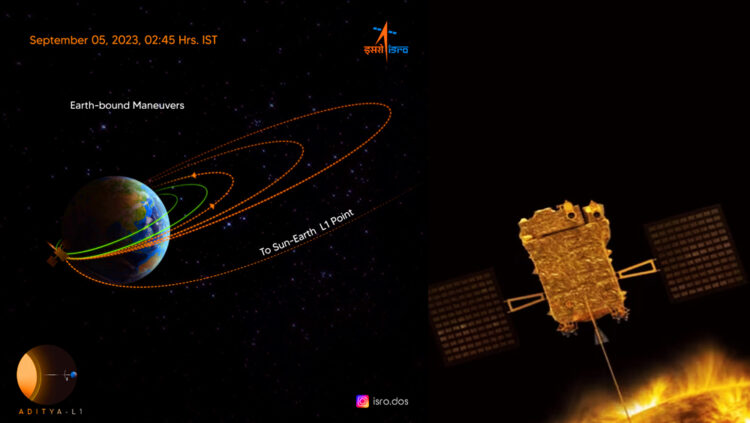Bengaluru: India’s inaugural solar mission, Aditya-L1, has achieved a successful milestone with the successful leap towards its second orbit. This orbital manoeuvre occurred at 2:45 am today. Aditya is currently positioned in an elliptical orbit, with its closest point to Earth at 282 km and its farthest point at 40,225 km.
The precise execution of the orbit-raising process was masterfully coordinated from ISRO/ISTRAC centres located in Bengaluru, Mauritius, and Port Blair. The mission’s next objectives involve raising the satellite’s orbit twice more within Earth’s orbital plane. Subsequently, Aditya L-01 will embark on a 125-day journey to reach its designated point. The following orbital elevation is scheduled for the 10th of this month, again at 2:45 am.
Anticipated scientific breakthroughs are on the horizon as information about the solar corona, the outermost layer of the sun’s atmosphere, is expected to be received from the satellite in January. In preparation for this groundbreaking data, the Indian Institute of Astrophysics in Bengaluru is poised to meticulously analyse the details.
Aditya-L1 Mission:
The second Earth-bound maneuvre (EBN#2) is performed successfully from ISTRAC, Bengaluru.ISTRAC/ISRO's ground stations at Mauritius, Bengaluru and Port Blair tracked the satellite during this operation.
The new orbit attained is 282 km x 40225 km.
The next… pic.twitter.com/GFdqlbNmWg
— ISRO (@isro) September 4, 2023
The satellite’s primary instrument, the Visible Emission Line Coronagraph (VLEC), was skillfully crafted at the IIA’s Centre for Research and Education in Science and Technology, Hoskote, with production taking place at the MGK Menon lab. VLEC’s central mission is to capture continuous 24-hour imagery of the solar corona from its vantage point at Lagrange Point. With a weight of 190 kg, it will transmit an impressive 1,440 high-quality images of the corona to Earth daily, promising to deliver the most remarkable corona images to date.
Moreover, the study of the corona in its plasma state is vital, as it expels significant amounts of gases and liquids that can disrupt space weather, generate geomagnetic storms in Earth’s atmosphere, and potentially harm satellites. To tackle this challenge, the Indian Institute of Astrophysics, in collaboration with the Aryabhata Research Institute of Observational Sciences, has developed a specialised algorithm for in-depth analysis.













Comments